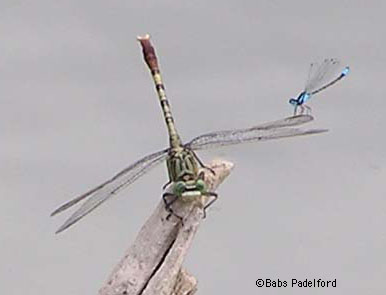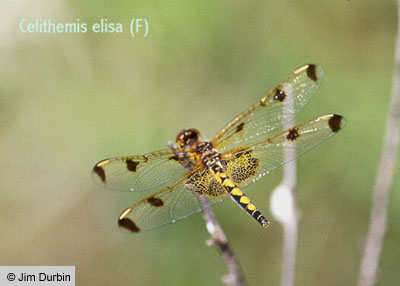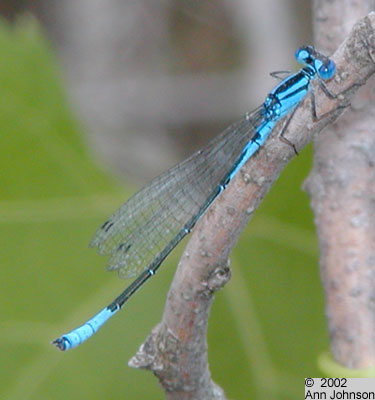- Dragonflies
- Suborder Anisoptera
- Darners
- Aeshnidae Family
- Clubtails
- Gomphidae Family
- Cruisers
- Macromiidae Family
- Emeralds
- Corduliidae Family
- Skimmers
- Libellulidae Family
- Damselflies
- Suborder Zygoptera
- Broad-winged Damsels
- Calopterygidae Family
- Spreadwing Damsels
- Lestidae Family
- Pond Damsels
- Coenagrionidae Family
- Links to Other Sites:
- OdonataCentral
- Iowa Odonata Survey
Field guides:
- The Dragonflies and Damselflies of Nebraska, Sibley, Paseka, and Beckemeyer (2019)
- Dragonflies and Damselflies of the West
- by Dennis Paulson
- (Princeton Field Guides, 2009)
- Dragonflies and Damselflies of the East
- by Dennis Paulson
- (Princeton Field Guides, 2012)
- Beginner's Guide to Dragonflies
- by Blair Nikula, Jackie Sones, Donald Stokes and Lillian Stokes (2002)
Dragonflies and damselflies are a silent but omnipresent part of the Nebraska summer landscape, especially around ponds and streams. Recently there has been a huge surge of interest in these winged insects, which captivate watchers with their beautiful colors and astonishing flying skills. They do not sting, their bite is very mild and they consume vast numbers of pest insects, such as mosquitoes. Their ability to capture flying prey on the wing and to avoid predation by birds is impressive to watch.

Jade Clubtail and Skimming Bluet

Calico Pennant female
There are currently 111 species of dragonflies and damselflies that can be found in Nebraska. Dragonflies are generally larger and more robust than damselflies, and they hold their wings open flat. They are strong flyers and can both hover and fly backwards. Dragonflies have eyes which are large and, in most families, close together. The hindwings of a dragonfly are wider at the base than the forewings. Nebraska dragonflies are grouped into the following families: Darners, Clubtails, Cruisers, Emeralds and Skimmers.
Damselflies are much more delicate than most dragonflies and are often found "grazing" on vegetation rather than taking prey on the wing. They are weak flyers that stay close to the ground or surface of the water. In contrast to dragonflies, damselflies (except for the Spreadwing family) hold their wings folded together over their backs. Nebraska damselflies are grouped into the following families: Broad-winged Damsels, Spreadwings, and Pond Damsels.

Azure Bluet male